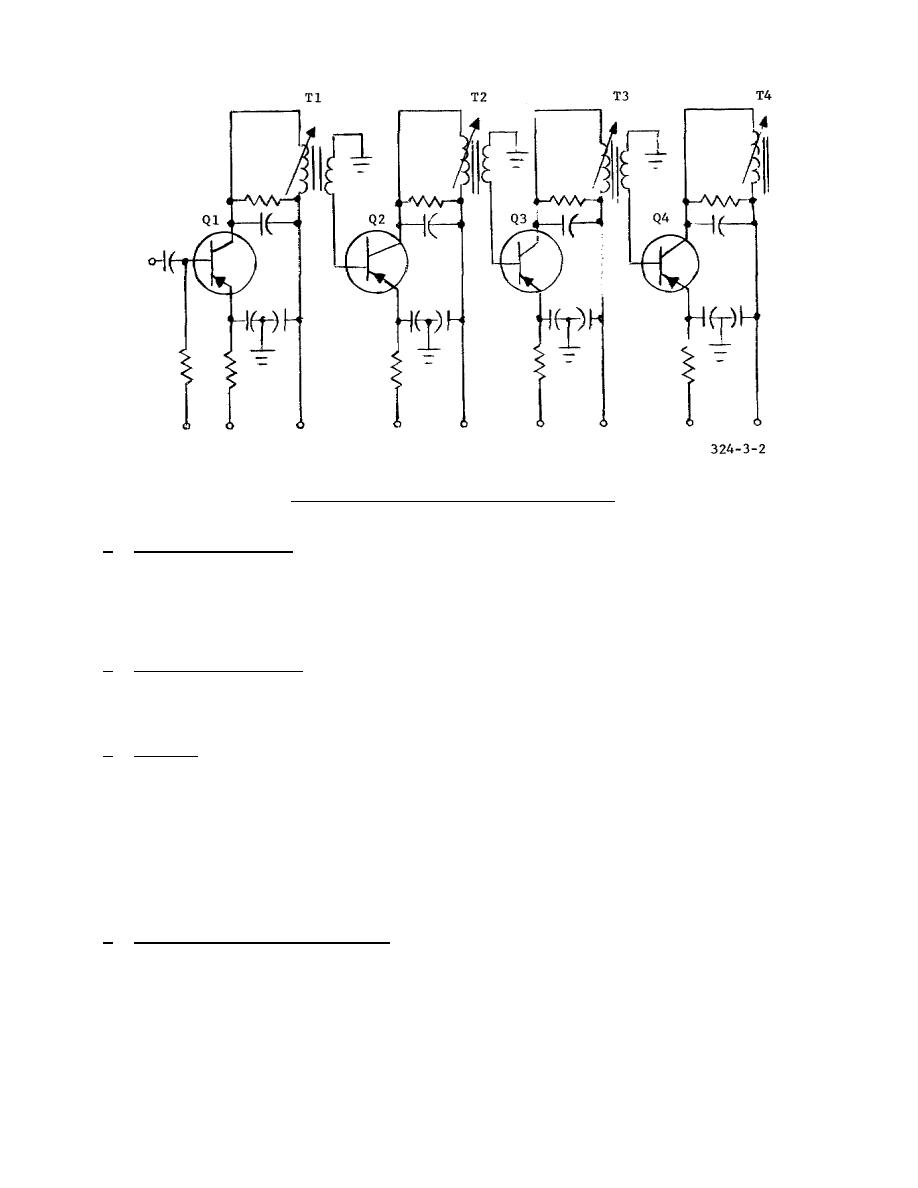
Figure 3-2.
Four-stage IF amplifier.
a. Resistive Loading.
Resistive loading of the tank circuits increases the
bandwidth while simultaneously reducing the possibility of oscillation.
This
increase in bandwidth is accomplished at the expense of gain, but it has the
advantage of being noncritical and eliminates the need of neutralizing circuits.
Furthermore, resistive loading reduces bandwidth variation as a function of
temperature and transistor operating points.
b. Capacitive Loading.
Capacitive loading of the tank
circuit
is
used
to
further reduce the sensitivity to temperature and bias drifts.
3-4.
DISCRIMINATORS
a. General.
A discriminator in an FM receiver performs the same general
function as a detector in an AM receiver--that is, deriving an audio signal from
the IF.
The electron-tube diodes in the discriminator and detector circuits
described in TM 11-668 can be replaced by solid-state diodes without making any
substantial changes.
The names and principles of operation remain the same
regardless of the type of diode used. The discriminator transfer characteristics
for the electron-tube and solid-state diodes are the same. If the frequency shift
of the incoming IF signal exceeds the linear portions of the S-shaped transfer
characteristic curve, the output becomes distorted in almost the same manner as
when the receiver is detuned.
b. Transistorized Discriminator.
Figure 3-3 shows a transistorized version of
an IF stage and a discriminator.
Amplifier Q1 amplifies the IF signal to be
applied to the discriminator.
Resistor R1 is the emitter-swamping resistor, and
capacitor C1 is an IF bypass. Capacitor C2 and the primary of transformer
29



 Previous Page
Previous Page
